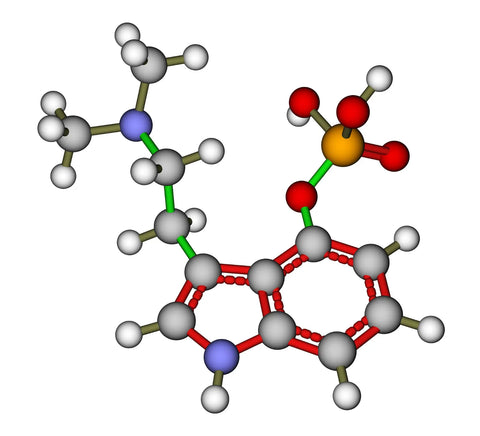Something amazing has happened in the world of anti-aging research, unveiling a powerful compound from plants that can target and eliminate aging cells. These cells, called senescent cells, accumulate as we age and contribute to various health issues. Scientists have been searching for natural compounds to fight aging, and this discovery is a big step forward. It's sparking excitement because it could help people live healthier lives as they get older.

In this blog, we'll explore what senolytics are and how they work. We'll also dive into the details of this plant compound and what it means for the future of anti-aging treatments. Let's uncover the potential of this exciting discovery and how it could change the way we age.
Understanding Senolytics
Senolytics are compounds or drugs designed to selectively target and eliminate senescent cells in the body. These cells accumulate with age and are implicated in various age-related diseases and degenerative processes.
The Role of Senolytics in Combating Aging
Senolytics play a crucial role in combating aging by specifically targeting and eliminating senescent cells. These cells, which accumulate in tissues throughout the body as we age, contribute to chronic inflammation, tissue dysfunction, and the progression of age-related diseases.
How Senolytics Work
Senolytics work by taking advantage of senescent cells' weaknesses. These cells resist normal cell death, so they stick around and build up in tissues. Senolytics target these cells specifically, making them self-destruct and getting rid of them from the body.
Promoting Healthier Aging
By eliminating senescent cells, senolytics help to promote healthier aging and mitigate the detrimental effects of cellular senescence. This can lead to improvements in tissue function, reduced inflammation, and enhanced overall health and longevity.
The Discovery
Discovering a plant compound with senolytic properties is a big deal in anti-aging research, offering hope for fighting age-related problems. This section explains how scientists found this compound and shares important discoveries about its effectiveness.

Research Process
The search for the plant compound with senolytic properties started with thorough scientific research and testing. Scientists looked at many natural compounds to see if they could target and kill senescent cells. They used advanced methods and tests to find one specific plant compound that worked really well as a senolytic. They then did more tests in lab dishes and on animals to make sure it could get rid of senescent cells without harming healthy ones.
Key Findings
The study's results strongly support the plant compound's effectiveness in combating aging. In lab experiments, it successfully triggered the death of aging cells, regardless of cell type or tissue. Animal tests further confirmed its ability to alleviate age-related health issues and improve overall well-being. Importantly, the compound showed very low toxicity, indicating it could be safe for use in humans. This suggests promising potential for using the compound in treatments for age-related diseases and anti-aging therapies.
Mechanism of Action
Understanding how the plant compound exerts its senolytic effects on senescent cells is crucial for unlocking its potential in promoting cellular rejuvenation and longevity.

Exerting Senolytic Effects
The plant compound targets specific pathways in senescent cells, guiding them towards programmed cell death, known as apoptosis. Unlike harsher treatments, it does this without harming healthy cells nearby. This precision ensures it only removes the problematic cells, leaving the surrounding tissues unharmed and functioning normally.
Promoting Cellular Rejuvenation
By eliminating senescent cells, the plant compound promotes cellular rejuvenation and tissue regeneration. Senescent cells contribute to inflammation and tissue dysfunction, and their removal allows for the replacement of damaged cells with healthy ones. This rejuvenation process helps restore tissue function and vitality, contributing to overall health and longevity.
Biological Pathways Involved
The plant compound acts on different pathways in the body to fight aging cells. It can target signaling pathways related to aging, like PI3K/Akt and MAPK, causing aging cells to self-destruct. Also, it can adjust the activity of genes that control cell death, encouraging aging cells to die off. This method ensures that only aging cells are targeted, leaving healthy cells untouched and promoting better tissue function.
Enhancing Longevity
By promoting cellular rejuvenation and tissue regeneration, the plant compound contributes to enhanced longevity. Removing senescent cells reduces the burden of age-related diseases and improves overall tissue function, allowing individuals to live healthier and longer lives.
Potential Benefits
Exploring the potential applications of the plant compound in anti-aging therapies and treatments reveals promising avenues for addressing age-related issues and extending overall healthspan.

Applications in Anti-Aging Therapies
The plant compound shows great potential for use in anti-aging treatments. It can specifically target and remove aging cells, providing a new way to fight age-related problems. Adding this compound to treatments could help reduce age-related diseases and improve overall health by rejuvenating tissues and promoting vitality.
Implications for Age-Related Diseases
The plant compound's effects aren't limited to anti-aging therapies; it could also treat age-related diseases. By targeting aging cells, which play a role in diseases like heart disease, neurodegenerative disorders, and cancer, it might offer therapeutic benefits. This could change how we manage and treat these diseases, potentially improving patient outcomes and quality of life.
Overall Healthspan Extension
Moreover, the plant compound shows potential for extending healthspan, the time someone stays healthy and free from age-related illnesses. By boosting cellular rejuvenation and tissue repair, it could make people more resilient to aging and postpone age-related decline. This extension of healthspan could improve quality of life, allowing individuals to stay independent and vital as they grow older.
Future Directions
Looking ahead, ongoing research and potential developments in harnessing the therapeutic potential of the plant compound offer exciting possibilities for advancing anti-aging therapies and improving human health.
Ongoing Research
Scientists are still studying the plant compound to understand all its benefits and how it works. They want to know exactly how it interacts with aging cells and how well it can make tissues healthier and help people live longer. Also, they're looking into how it might work even better when combined with other anti-aging treatments and how it affects overall health.
Prospects of Clinical Trials
As research goes on, the plant compound might be tested in clinical trials to see if it's safe and works well in people. These trials give important information about how the compound could help with different age-related problems and if it's good enough to be approved for medical use. In these trials, the compound is carefully tested in controlled environments to see how it affects certain age-related diseases, how it helps people live longer and healthier lives, and how it improves their quality of life.
Regulatory Approvals
If the clinical trials are successful, the plant compound can apply for approval from regulatory agencies like the FDA in the US and the EMA in Europe. These agencies check scientific data to make sure treatments are safe, effective, and good quality. Once approved, healthcare providers can prescribe the plant compound for age-related problems as part of regular medical care.
Last Word
The discovery of the plant compound as a powerful anti-aging treatment is a big deal. It can target and remove aging cells, which is really promising for fighting age-related problems. This shows how important it is to keep researching new ways to help people age better and stay healthy longer. Continued research will help us find more ways to keep people feeling young and active as they get older.





